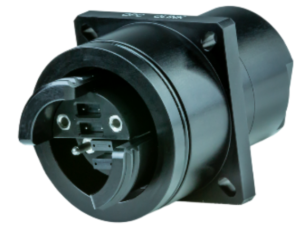The harsh environment fiber optic cable world is seeing an influx of MT connectors and applications. As traditional harsh environment applications are seeing a need to trunk more and more fiber optic signals, it makes sense that the applications are moving towards some of the high-density, smaller-factor connector options and MT connectors fit that bill surprisingly well.
The limiting factor of MT ferrules is that they are not typically known for their durability. Harsh environment connectors are typically rated for 2,000 – 3,000 mating cycles and MT connectors are typically rated for 500 mating cycles (QPC did some testing on this and you can find it here). The protection against the outside elements that harsh environment connectors offer give MT connectors a ruggedness that they’ve never known before. MT connectors are finding homes in industrial settings, mining and sensing applications, military communications, and medical applications, to name a few.
 The common thread to these applications is that they don’t necessarily require a high mating durability, rather they are applications that have other factors, like high vibration, temperature fluctuation, immersion in liquid and other environmental situations. The application is key to choosing the right MT connector option (check out this White Paper from Fischer about choosing the correct rugged connector). Medical applications and military communications require a level of stability in the connection that telecommunications applications do not require. When you need to trunk together a large number fibers in a small space, then MT ferrules with military shells are a match made in fiber optic heaven.
The common thread to these applications is that they don’t necessarily require a high mating durability, rather they are applications that have other factors, like high vibration, temperature fluctuation, immersion in liquid and other environmental situations. The application is key to choosing the right MT connector option (check out this White Paper from Fischer about choosing the correct rugged connector). Medical applications and military communications require a level of stability in the connection that telecommunications applications do not require. When you need to trunk together a large number fibers in a small space, then MT ferrules with military shells are a match made in fiber optic heaven.
The key to MT penetration into the harsh environment world is the ability to integrate traditional MT ferrules into a variety of connector styles. Before that, you would most likely see an MT connector on a data center trunk cable, connecting hundreds of fibers in dozens of connectors, neatly arranged into panels and split out to a myriad of equipment and data storage devices. Now, you can find them integrated into D38999 MIL-Spec connectors and the various OEM offshoots of that style, hermaphroditic connector systems, push-pull systems, and several others. Traditionally, the MT was used to put as many fiber connections into as small a space as possible and that was really the main purpose of the MT. In the harsh environment world, that ability to trunk fibers into 12 and 24 fiber ferrules allows a relatively smaller number of fibers to be connected in very secure, and rugged ways.
With any fiber optic application, cleaning is paramount to maintaining system integrity and ensuring that your communication system runs without issues. MT connectors are no different, in fact, the density of the fibers within the ferrule arguably make cleaning even more important with systems that feature MT connectors. The rugged nature and sealing features of the harsh environment connector shells help in keeping capped or mated connectors clean by defending against intrusion of foreign objects and debris, however any time a fiber optic connector is exposed, it needs to be cleaned before mating. Employing common cleaning practices should be able to extend the life of your harsh environment MT connectors, just like any other fiber optic connector, even in harsh environment applications.



